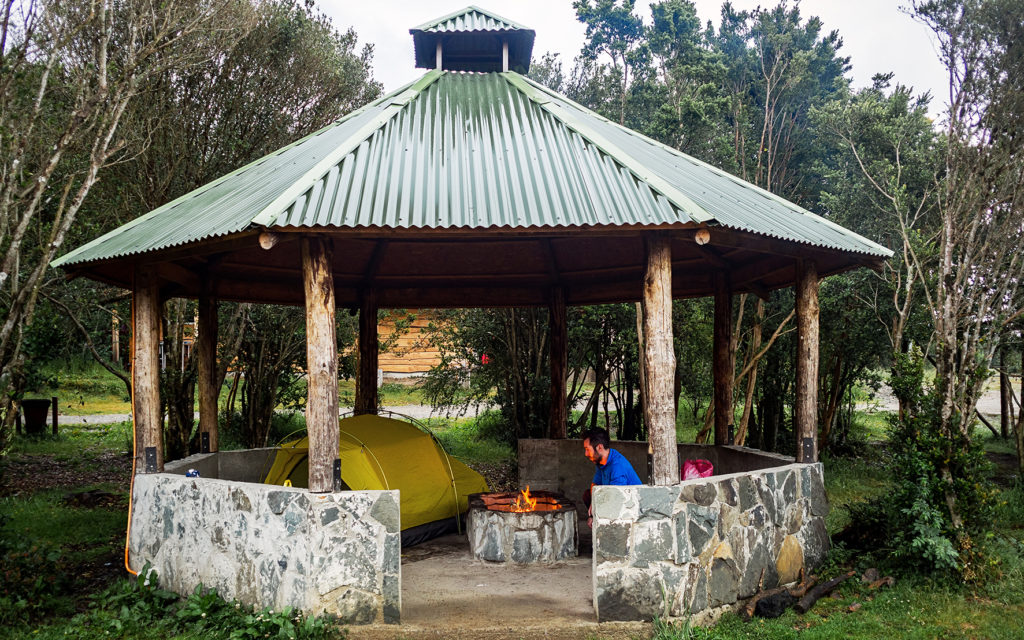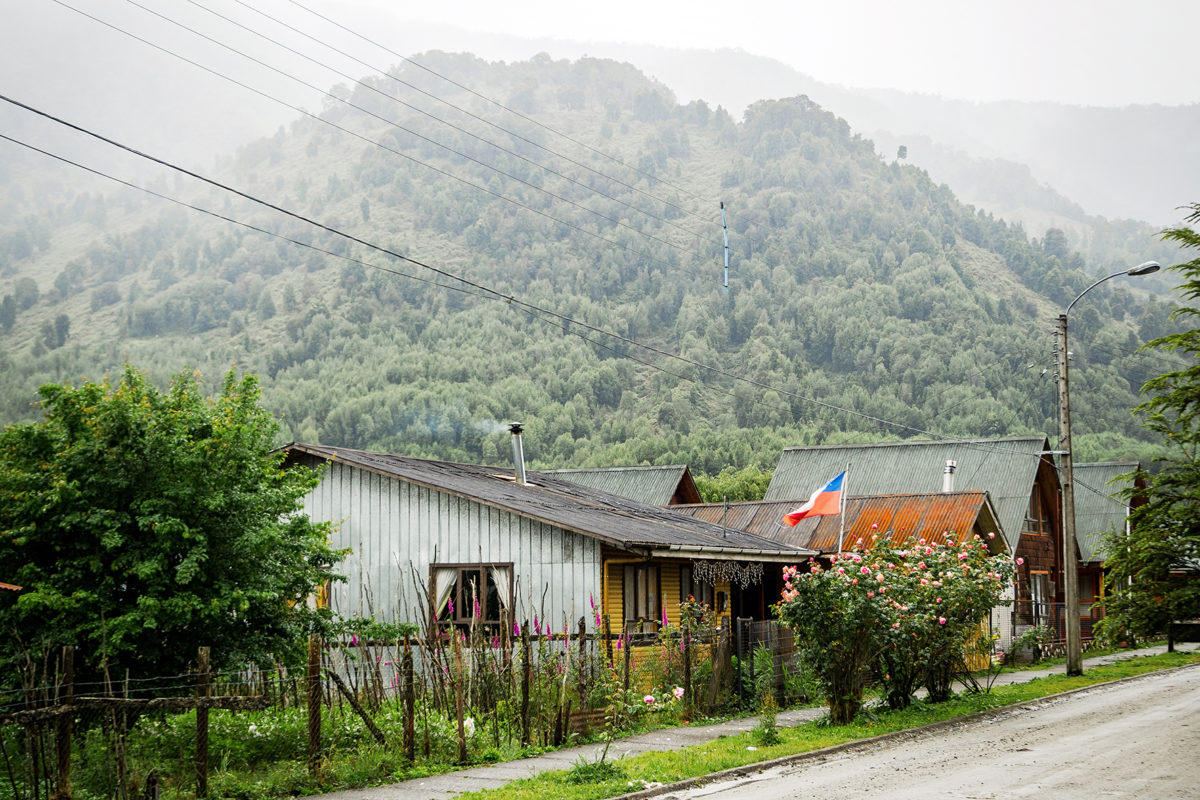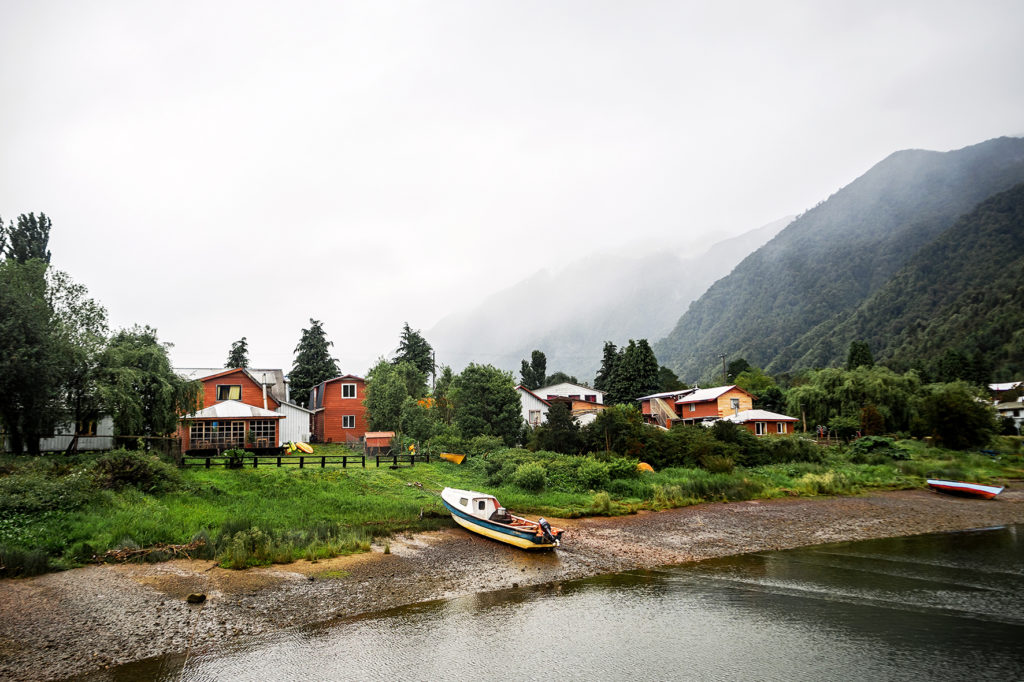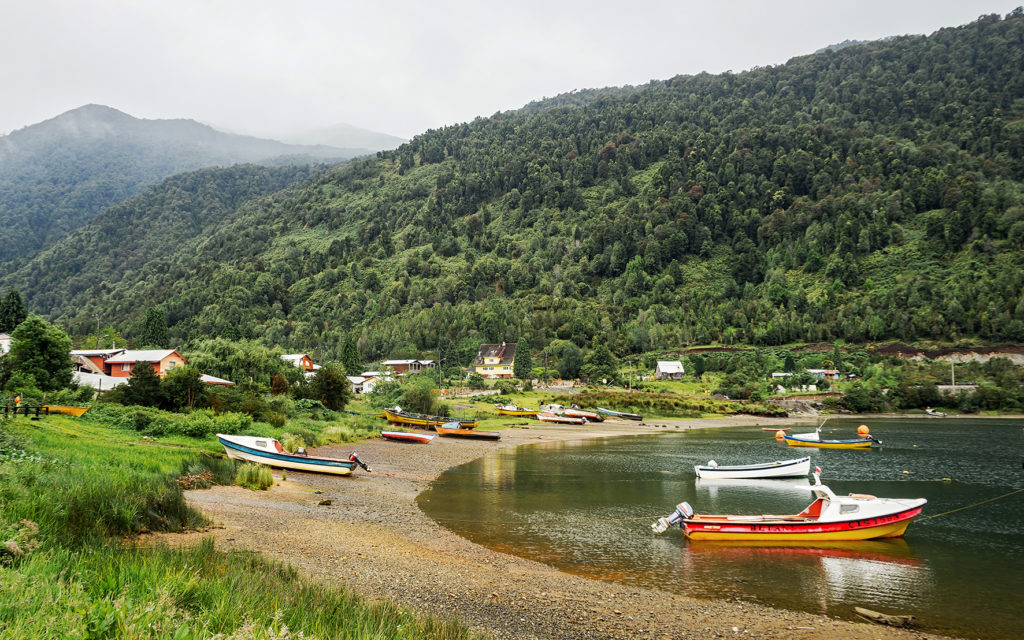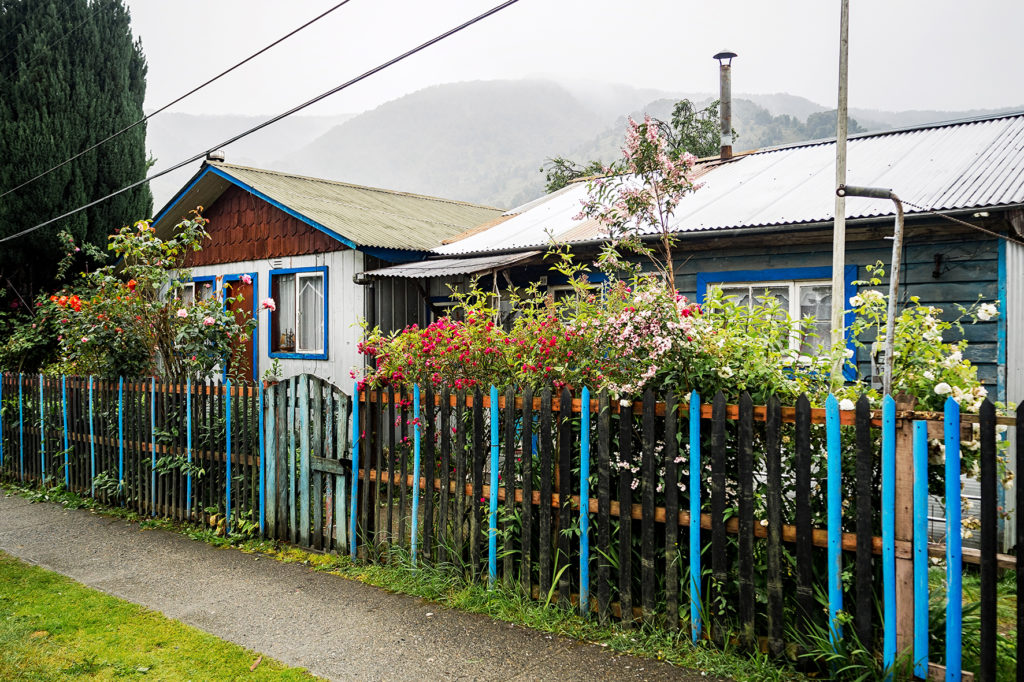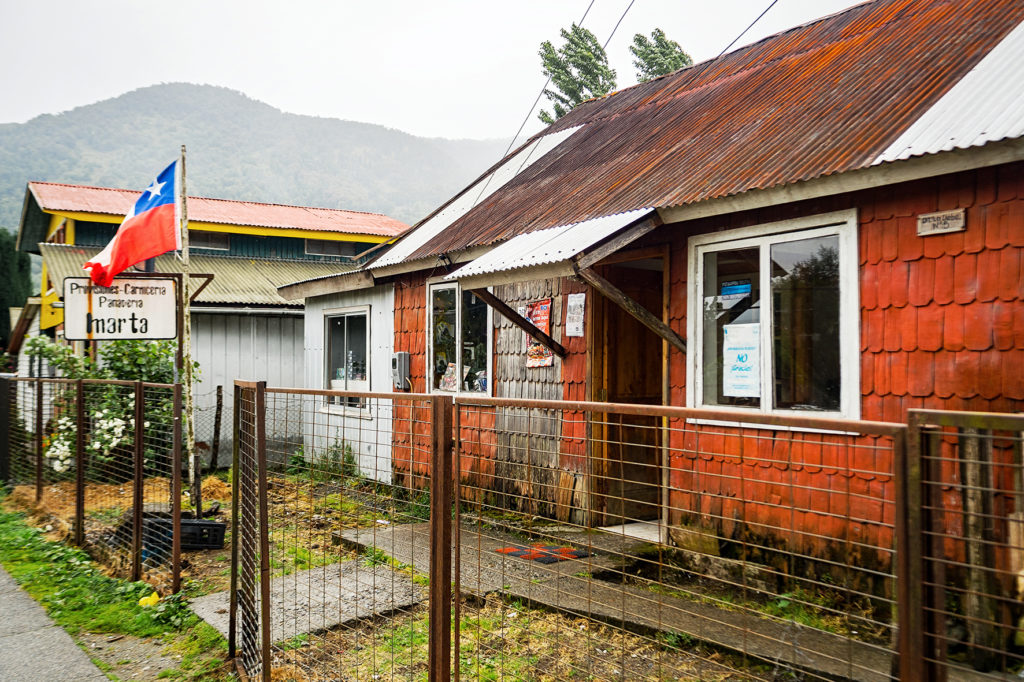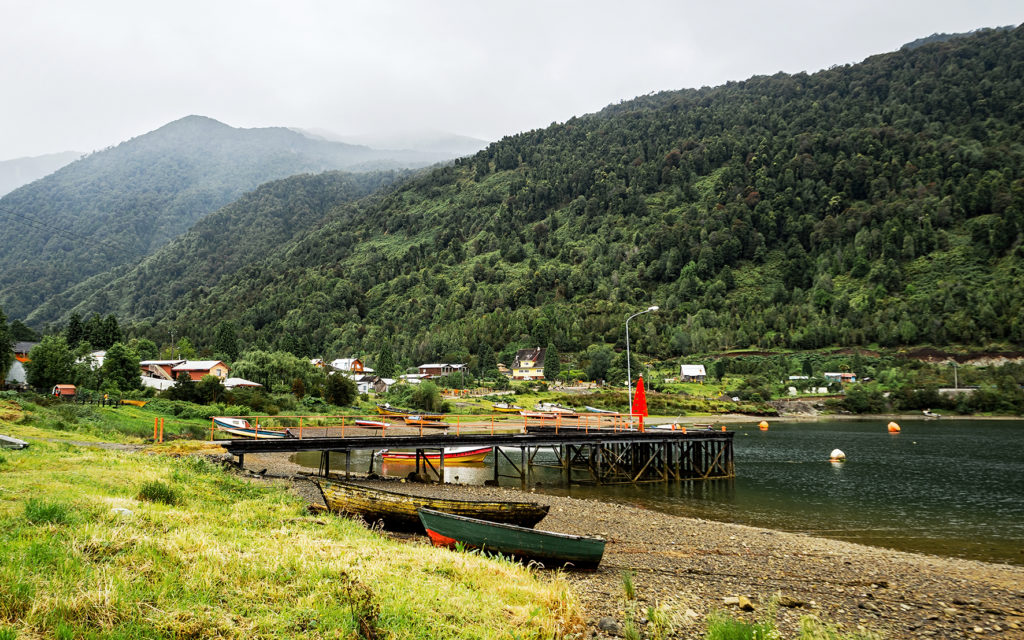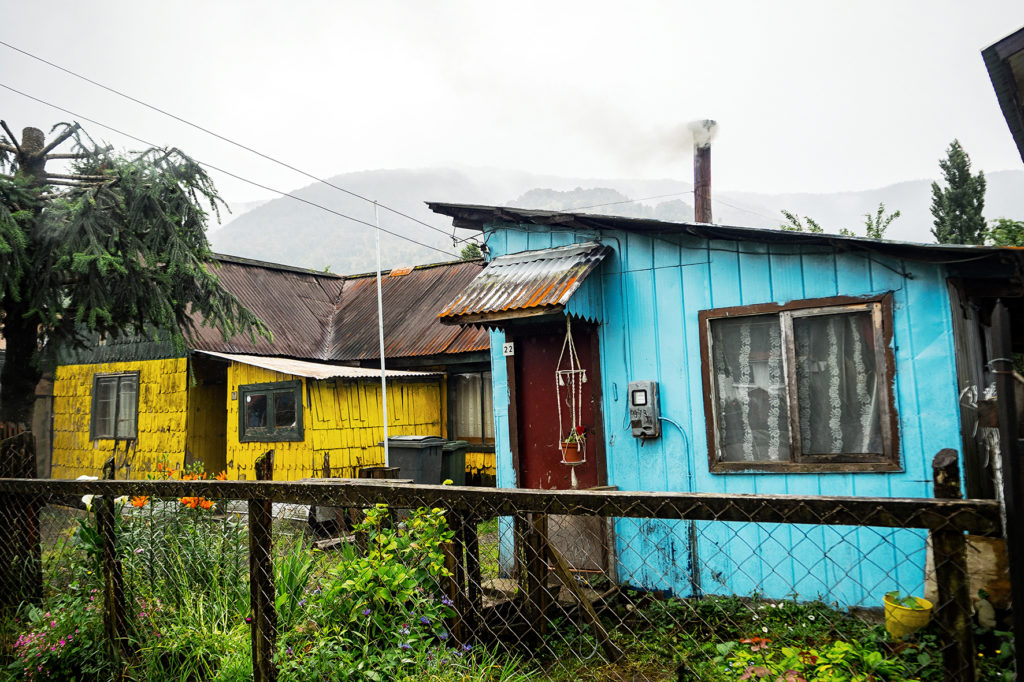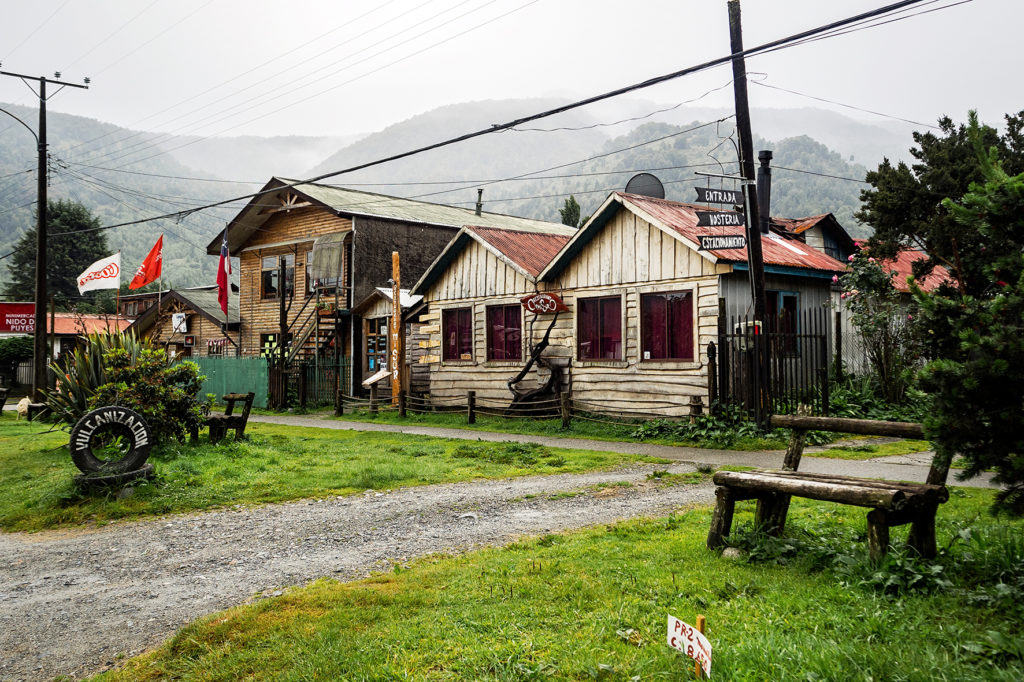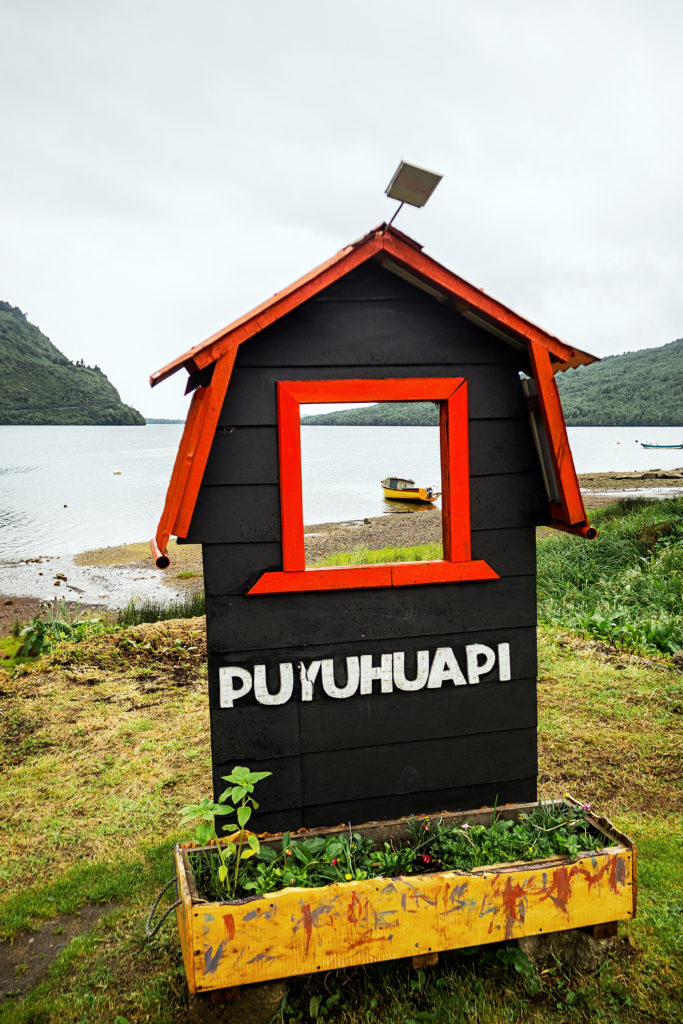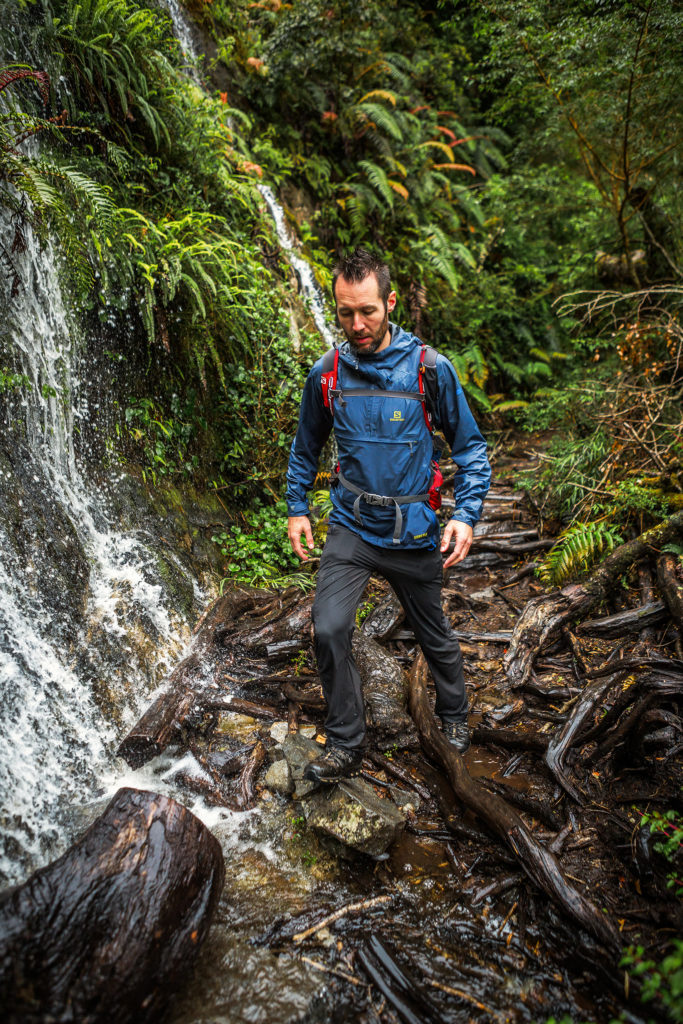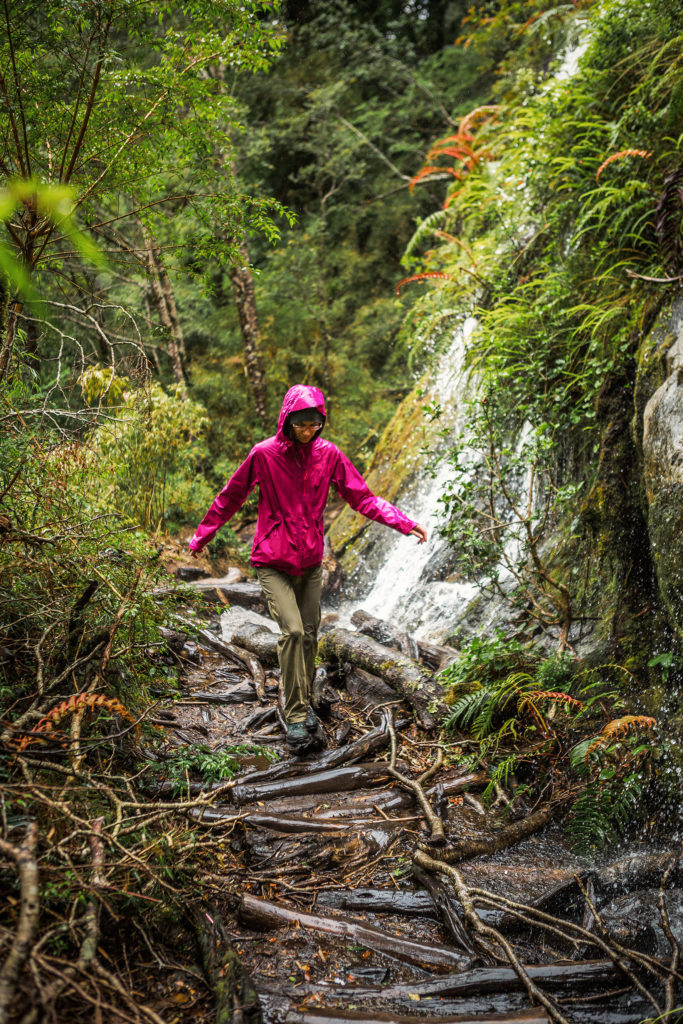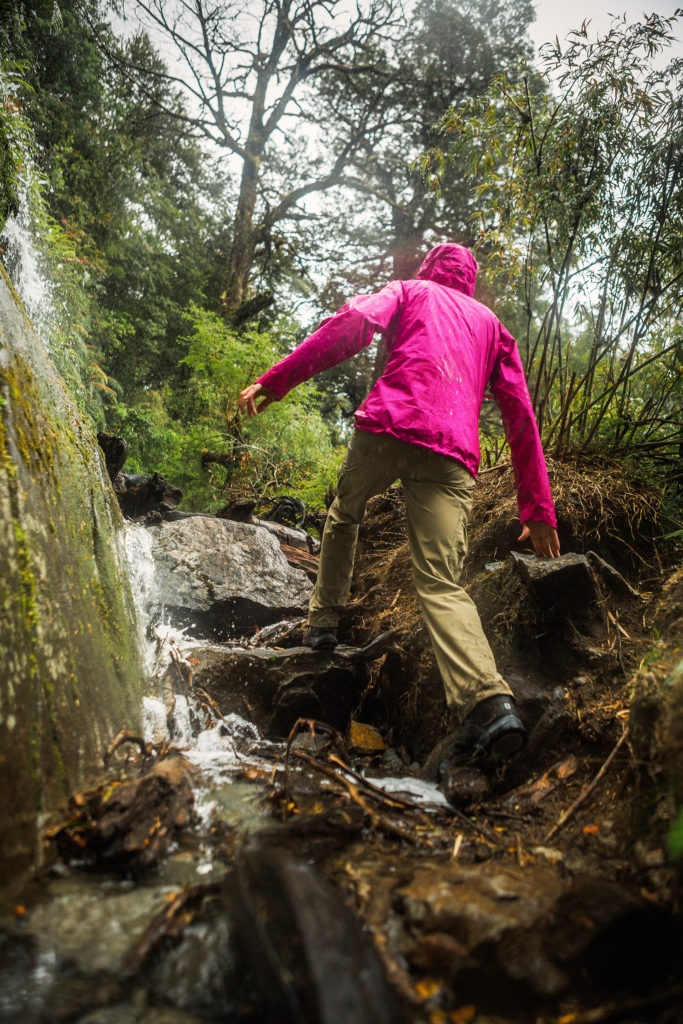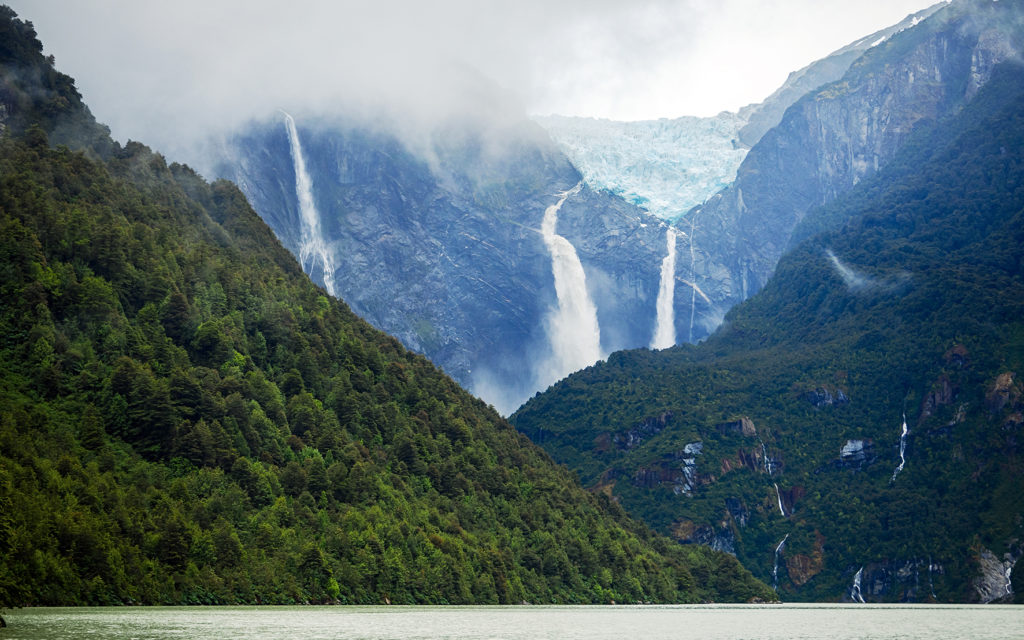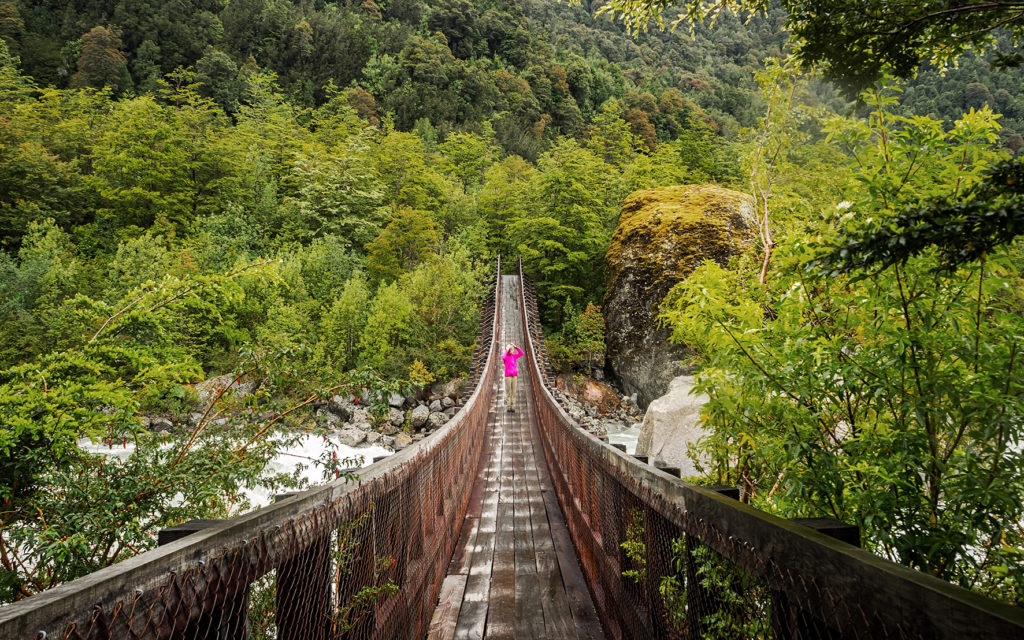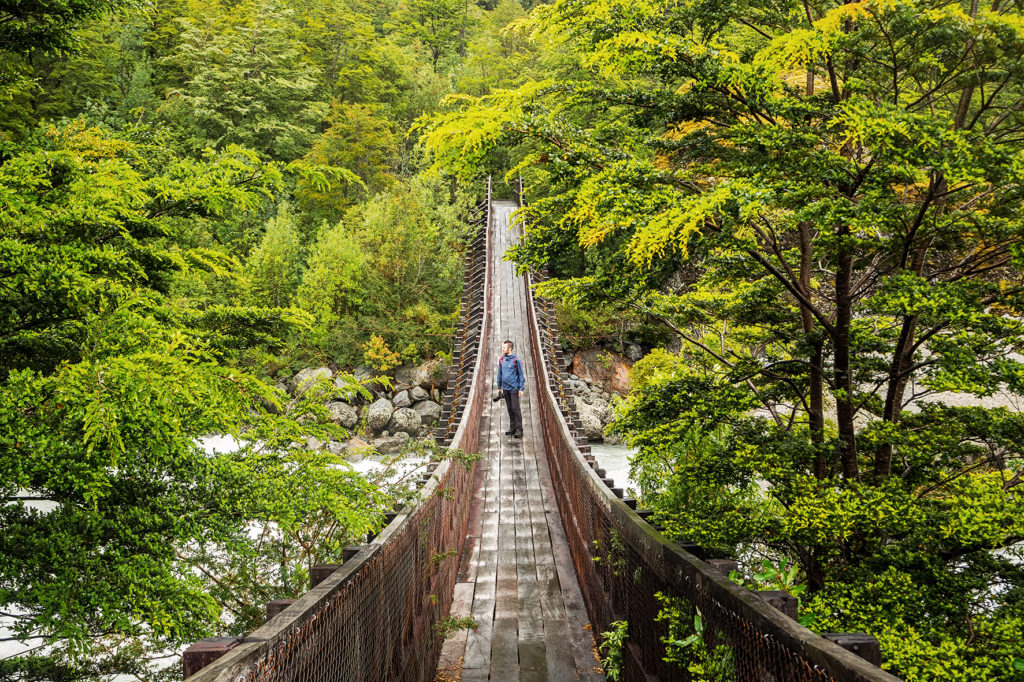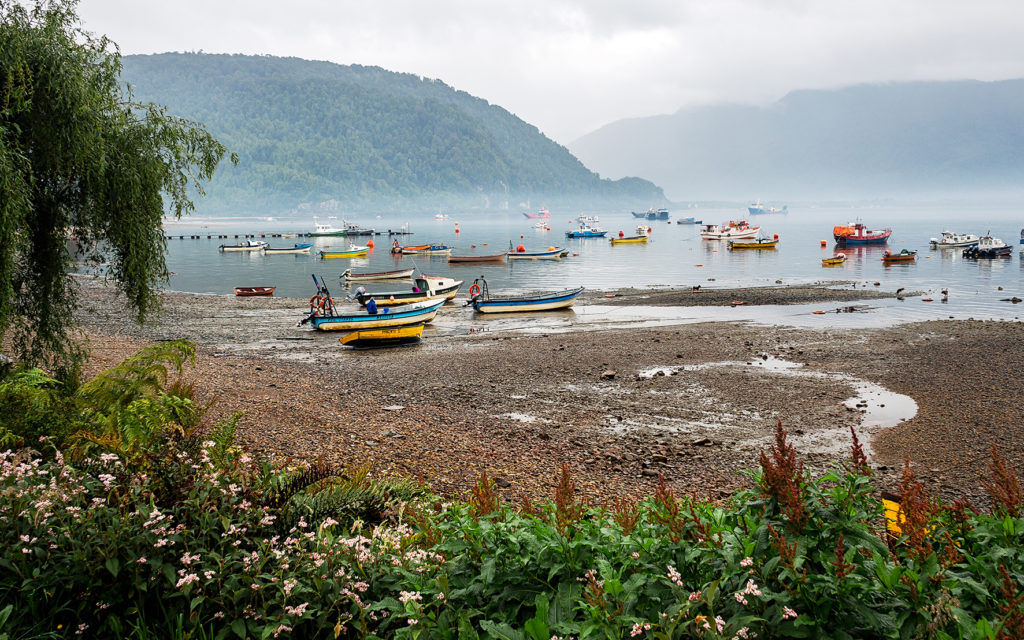Our next planned stop on day 3 was a hike in the Queulat National Park, to go check out the Ventisquero Colgante, the “hanging glacier”.
But first we had to drive from La Junta to Puyuhuapi. That portion of road was pretty rough, and there was quite a bit of construction in progress especially on both sides of the town. We took a stroll through Puyuhuapi, to take in the atmosphere of this small port town.
Even on a gray rainy day, this little town felt warm and colorful, and an enjoyable break from driving. On the way out we picked up a couple of hitch-hikers who were also heading to the park, then carried on along the coastal road.

It was already 1:30pm when we arrived in Queulat National Park. We had a quick sandwich then headed up the look-out trail, a 3-hour return hike up to a high view point of the famous Hanging Glacier. The way up was not very steep, but it was raining quite a bit and we had to navigate mud and small streams. It felt very much like a rainy day on Vancouver’s North Shore – but with completely different vistas. We didn’t waste much time and got to the top in about an hour (turns out, we hike much faster when we are well fed).
Unfortunately, the clouds were low and the glacier was completely engulfed in them, so we couldn’t see much of anything. We made our way back down and 45 minutes later, we were back at the trail head.
There was another much shorter trail that lead to the shore of the lake which laid below the Glacier, so we walked there and arrived just as the clouds parted. The glacier was visible just long enough to snap a few photos, before the fog and clouds rolled in and it was gone again.
The park also featured a pretty cool suspension bridge, which we crossed to get to and from the trail head.
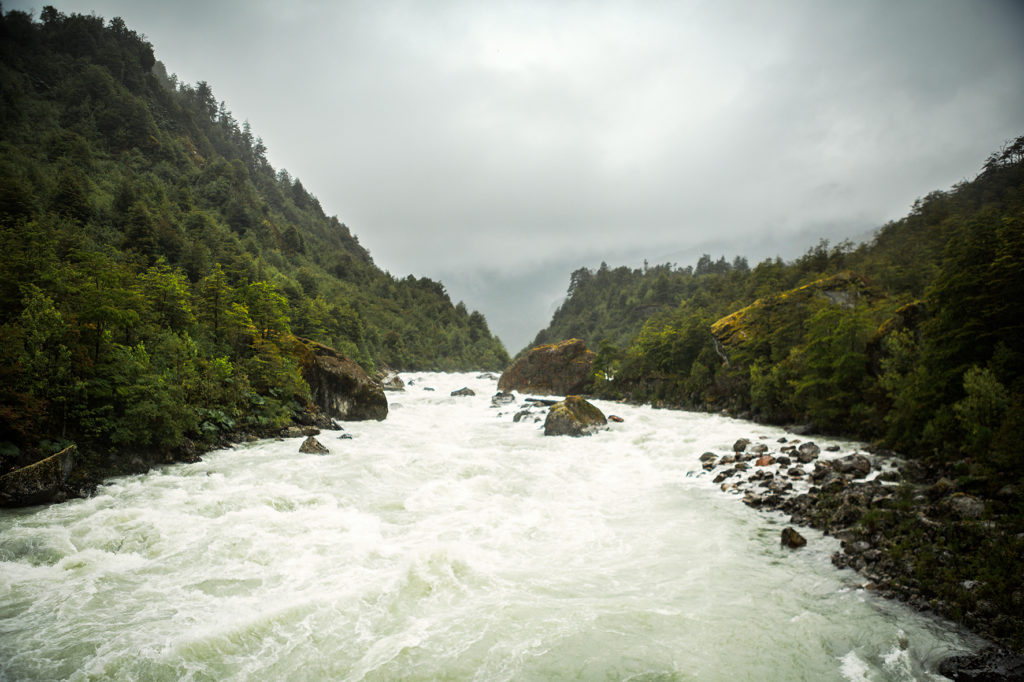
From the Queulat National Park, we drove to Puerto Cisnes, to spend the night. We looked up camping options in or around the town, and iOverlander pointed us to a beach area near the southern exit of the town.
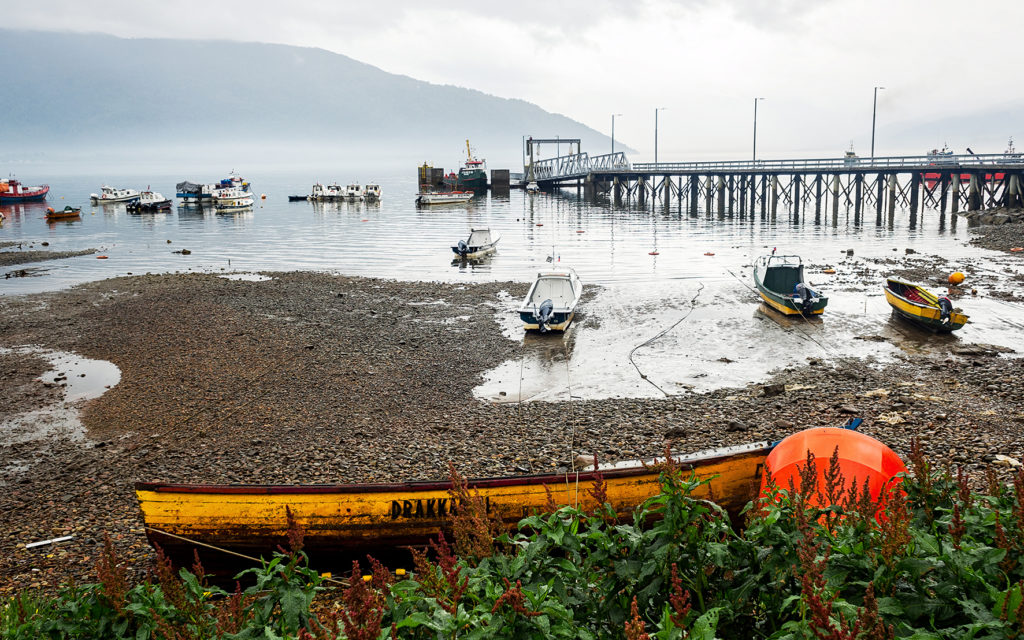
Along the beach where several open quinchos, each with a large fire pit in the center, and enough room on either side to pitch our tent. A couple were already occupied by other campers, but a few remained free still. We didn’t have fire wood, so we drove back into town to find some. I walked into the first “mercado” we saw and asked if they knew where I could find wood (I didn’t know the correct word but later learned it was “leña”). Somehow they understood what I was looking for, and told me to go a couple of blocks away, to a house where a woman would sell us some. So we followed their directions and sure enough, ended up in front of a house that had bags and bags of firewood stacked up under a carport. We bought a bag for 5000CLP (about 7.5 USD) and drove back to the beach.
The tide was low and boats where washed up on the beach. I took a walk around for a cool view of the town in the fog across the bay.
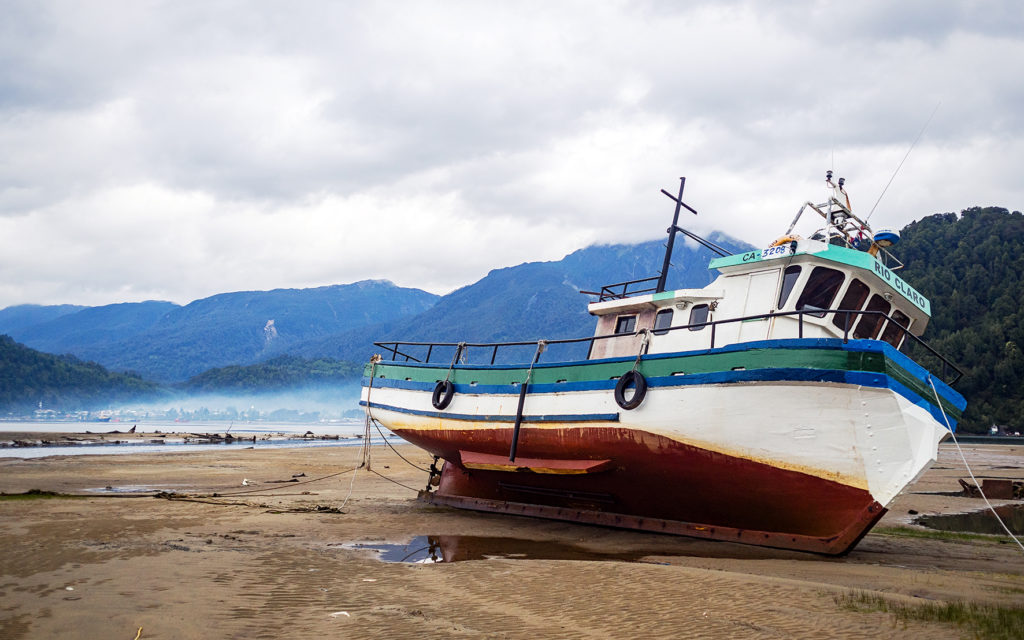
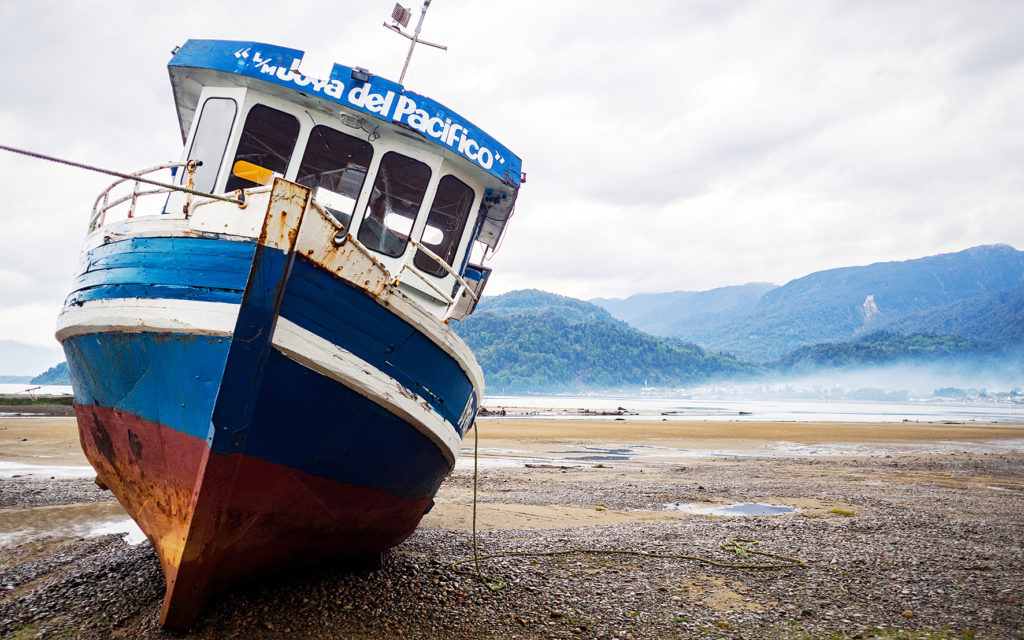
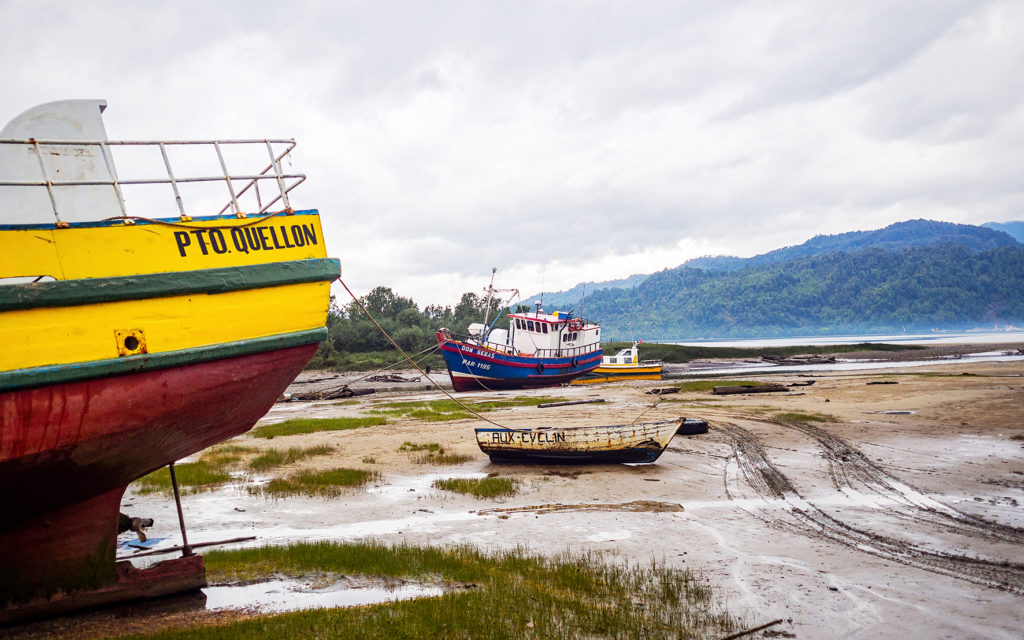
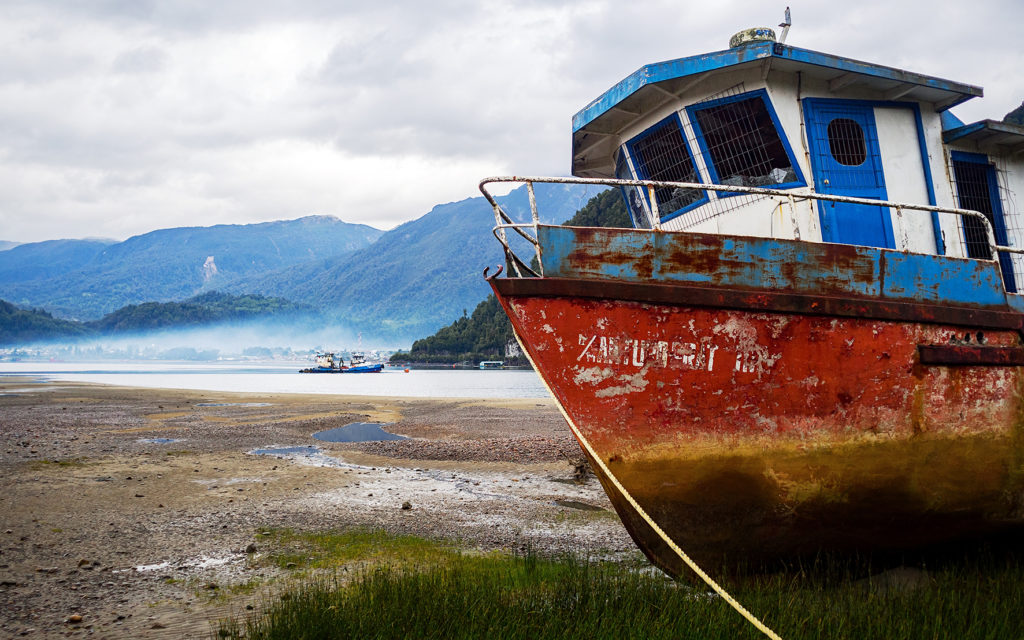
Once we had the fire going and the tent set up out of the rain, it was pretty perfect. Later a group of locals came and set up in the next shelter over. They started blasting music and before I could even say anything, Brice was over there asking them to turn it down, which they did (no idea how he asked in Spanish, but whatever he said or gestured worked). Later a policeman came around and asked if we could write our passport numbers in his records. He also opened the building behind the beach so we could make use of the restrooms.
Later in the night, the wind started blowing really strongly, so we were glad our tent was under a shelter. It gave us a first glimpse at that infamous Patagonia wind I had read a lot about, the kind that will stop you in your tracks and sometimes even knock you over. For now, we had the comfort of the quincho, but who knows what the wind would be like later, once we were standing, shelter-less in Torres del Paine…
